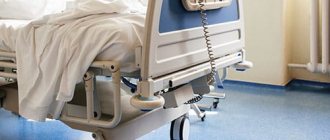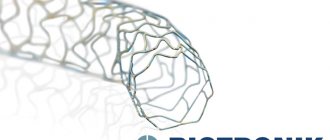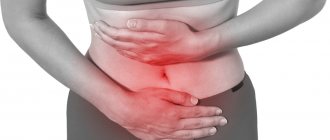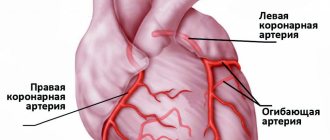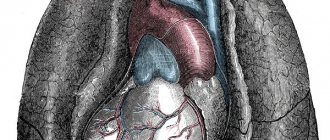Heart pain can arise from completely different reasons. Some pains do not pose a danger and can simply be tolerated, while other pains are strictly contraindicated and must be relieved immediately. How to find out what kind of pain you have? You need to see a doctor and undergo an examination, without waiting for obvious signs, at the slightest suspicion.
Diagnosis of heart pain
An experienced doctor can determine its origin based on the description of the pain. But to confirm the diagnosis you need to undergo an examination. First of all, an electrocardiogram (ECG) is done, including with physical activity. If no abnormalities are detected, the ECG is recorded throughout the day (24-hour monitoring).
If pain in the heart appears after a sore throat, then an ECG, echocardiography (ultrasound examination of the heart), and blood tests are required, which can reveal inflammation in the heart muscle.
If you have pain in the heart area, be sure to consult a doctor - he will help you figure out how serious it is. What methods are used today to study cardiac activity? There are quite a few of them, and the specific diagnostic set in each case is determined by the attending physician.
- The well-known ECG - taking a cardiogram - is a mandatory technique for any suspicion of heart disease. Stress ECG is also widely used - recording data during physical activity (usually velometry or treadmill test), as well as Holter ECG (when an electrocardiogram is taken during the day).
- Often, the doctor prescribes a graphical recording of heart sounds and noises (phonocardiography), a study of the valves and muscles of the heart, as well as the speed of blood flow in the heart cavities using ultrasound waves (echocardiography). Coronary arteries are studied using a radiopaque method (coronary angiography). How well the myocardium is supplied with blood can be determined by radionuclide diagnostics (scintigraphy).
- To exclude damage to other organs as the cause of heart pain, patients are prescribed a spinal examination (X-ray, computed tomography, MRI), consultation with an orthopedist, neurologist, gastroenterologist, and even a psychotherapist.
Experienced doctors know that some (and fairly accurate) conclusions can be drawn by listening carefully to the patient. When a person describes his feelings in detail, keeps and shows the doctor a kind of diary of the occurrence and nature of pain in the heart area, most likely the heart itself has nothing to do with it. Also, an “external” source of pain is indicated by patient reports of varying durations of attacks, a strong and very disturbing heartbeat - of course, if the person does not have heart failure. But if the patient perfectly remembers all his painful sensations, but describes them sparingly and reluctantly, there is a high chance of diagnosing serious heart disease.
In any case, remember: the main thing to do if your heart hurts is to consult a specialist and give him the right to draw conclusions about your health.
Heart pain can be a consequence of cardioneurosis, a disease of the nervous system. They intensify under stress and have a constant aching character. Such pain is relieved with sedatives (for example, valocardine or valerian). But you need to remember that only a doctor can make a diagnosis of cardioneurosis after an examination.
Pain in the heart due to inflammation of the heart muscle (myocarditis) is prolonged, aching, sometimes it is combined with stabbing pains, they are usually felt not behind the sternum, but to the left of it. The pain intensifies with physical activity, usually combined with shortness of breath, a feeling of “interruptions” in the heart’s work and its “fading”, weakness, malaise, and sometimes with a slight fever. Such pains often appear 2-3 weeks after a sore throat or other illness. You can’t joke with these pains - you need to see a doctor immediately, the treatment will be long-term.
Heart pain can occur when the arteries that supply nutrients and oxygen to the heart muscle spasm (compress). Such attacks of pain are called angina pectoris, they are very dangerous and cannot be tolerated.
Sharp pain in the heart
Unpleasant sensations in the chest area may indicate pathologies of the cardiovascular system and gastrointestinal tract. In this case, sharp pain in the heart can also be explained by heart disease or a disorder of other organs. To identify the exact cause of such a symptom, a thorough diagnosis may be required, including instrumental and laboratory research methods.
Features of pain
The characteristics of pain are an important indicator, since symptoms change with different pathologies. Thus, with coronary artery disease, sharp pain in the heart can disappear without treatment within 15-20 minutes, and with a heart attack, sharp stabbing pain in the heart only intensifies over time. It is also important to identify the type of pain sensation. It can be stabbing, squeezing, aching or cutting pain.
It is also important to consider the distribution of pain. Doctors often say that localized pain in the chest area or solar plexus is often associated with gastrointestinal diseases, and not with the heart. An alarming signal is a sharp pain in the heart area, gradually spreading to the upper limbs, back, neck and lower jaw. These are common signs of myocardial infarction.
8
24/7
Function of the cardiovascular system
The key to understanding the causes of chest discomfort is the physiology of the heart and blood vessels. Thus, the heart is a powerful muscular organ, the continuous operation of which provides all tissues of the body with nutrients and oxygen. The constant frequency and strength of the heartbeat, regulated by internal and external structures, maintains hemodynamic constants, including blood pressure and blood flow patterns. The myocardium and membranes of the heart contain a large number of receptors associated with the nervous system. Painful sensations can appear due to injuries, hypoxia of muscle cells, inflammation and other ailments.
We should not forget that the heart is close to other anatomical structures. These are primarily the esophagus, lungs, spine and celiac plexus. Disease in other organs can also cause symptoms similar to those of a heart disorder. For example, a sharp pain in the heart when inhaling may well be associated with air entering the pleural cavity or neuralgia. Without a thorough diagnosis, it is impossible to determine the exact cause of pain.
Possible causes of the symptom
The search for the source of pain should be aimed at diagnosing all organs of the chest. If characteristic signs of a heart attack, internal bleeding or other acute pathology appear, emergency medical attention may be required. It is also important to immediately exclude pulmonary, neurological or gastrointestinal pathology.
Diseases of the heart and blood vessels that cause severe pain in the heart:
- Ischemia of cardiac muscle tissue. If there is insufficient blood supply to the myocardium, severe complications can occur. The condition may be associated with atherosclerosis of the coronary arteries or impaired vascular tone. Coronary artery disease often manifests itself as severe chest pain called angina. It is important to be able to distinguish angina from signs of a heart attack or gastroesophageal reflux.
- Myocardial infarction is partial destruction of the muscular lining of the heart as a result of prolonged hypoxia of cardiomyocytes. This is the most dangerous cardiovascular disease. The sharp pain in the heart that occurs during a heart attack is in many ways similar to an angina attack.
- Aortic aneurysm is the formation of a pathological pocket in the wall of the artery. In this case, a significant expansion of the aorta occurs. Aneurysms are dangerous due to possible rupture of the wall of the affected vessel and extensive bleeding.
- Pericarditis is an inflammatory pathology of the membrane surrounding the heart (pericardium). Fluid may gradually accumulate in the pericardial cavity, interfering with the heartbeat. In this case, sharp pain in the heart occurs due to compression of the myocardium and disruption of the blood supply to the organ.
- Myocarditis is inflammation of the muscular lining of the heart. Pathology may have a viral or bacterial etiology.
- Myocardial contraction rhythm disorder. Arrhythmia is characterized by too frequent, infrequent or chaotic heartbeats. Pain in such a disease is often caused by impaired blood supply to organs.
- Damage to the heart and blood vessels due to chest trauma. Often, patients injured in accidents have no visible signs of injury, but doctors later discover internal bleeding.
- Aortic dissection is a rupture of the wall of a large artery arising from the left ventricle.
- Consequences of heart surgery. Thus, damage to large bundles and nodes of the conduction system can cause rhythm disturbances.
8
24/7
Possible causes not related to diseases of the cardiovascular system:
- Gastroesophageal reflux is the release of acidic stomach contents into the esophagus. Substernal pain may occur.
- Gallstones that prevent the release of secretions into the small intestine.
- Inflammatory diseases of the esophagus.
- Diseases of the pancreas, including acute and chronic pancreatitis.
- Pneumonia is an infectious disease of the lung tissue.
- Pneumothorax is the entry of air into the pleural cavity with subsequent respiratory failure.
- Blockage of the pulmonary artery and general hemodynamic disturbance.
- Obstructive pulmonary disease.
- Neuralgia.
- Fracture of the ribs or sternum.
- Anxiety disorder.
The abundance of possible causes makes initial diagnosis difficult. Sharp pain in the heart can be caused by even minor stress.
Other symptoms and signs
Sharp, severe heart pain is rarely the only symptom, so differential diagnosis may require identifying additional symptoms and signs. First of all, it is important to evaluate objective signs of the cardiovascular system, including:
- Blood pressure.
- Pulse rate.
- Heartbeat sounds on auscultation.
In addition to discomfort in the chest, the following signs may be detected:
- Nausea and vomiting.
- Dizziness.
- Loss of consciousness.
- Abdominal pain.
- An unpleasant taste in the mouth and a burning sensation in the throat.
- Spread of pain to the upper extremities, lower back, lower jaw and neck.
- Breathing disorders, shortness of breath.
- The appearance of cold sweat.
- Panic attack.
- Muscle weakness.
- Stupor or stupor.
If the pain spreads to the back, limbs and jaw, you should immediately consult a doctor. Also, patients with coronary heart disease should pay attention to the nature and duration of angina. If the attack lasts longer than 20 minutes and nitroglycerin does not help, you should also urgently seek medical help.
Diagnostics
Sharp pain in the heart, the causes of which may be associated with different organs of the chest, often requires a comprehensive diagnosis. The patient can seek advice from a therapist, cardiologist or neurologist. During the appointment, the doctor will conduct a physical examination to assess objective signs of the disease, ask about complaints and study the medical history.
Additional diagnostics:
- Electrocardiography – registration of the bioelectrical activity of the heart. To do this, special sensors are placed on the patient’s body connected to a cardiogram recording device. Based on the test results, one can judge the presence of a structural pathology that prevents the normal propagation of an impulse in the myocardium.
- Echocardiography is the main imaging method in cardiology. The doctor uses a transducer that sends high-frequency sound waves into the heart to produce an image. Monitoring the heart's performance on a monitor in real time allows you to detect the pathological area and assess the degree of pumping dysfunction.
- Coronary angiography – visualization of blood vessels. As a rule, this method is used to diagnose coronary artery disease, heart attack and atherosclerosis. Before taking the image, the doctor injects a contrast agent intravenously to improve the accuracy of the study. Based on the results of coronary angiography, one can judge the cause and degree of narrowing of the vessel.
- Blood tests for signs of infection, hormones, electrolytes, and heart attack indicator enzymes.
- Bicycle ergometry - obtaining a cardiogram during frequent heart contractions. This test is most often used to diagnose hidden arrhythmia that occurs against the background of significant stress.
- Holter study – recording of a cardiogram on an electronic device of a portable device within 24-48 hours. Before the study, the patient is instructed to keep a diary of well-being to clarify the time of occurrence of heart pain.
- Cardiac biopsy – removal of a section of heart tissue followed by histological examination.
- Computed tomography and magnetic resonance imaging are methods for obtaining high-resolution images of the heart and blood vessels. The images are often used to plan surgery.
- Endoscopic examination of the esophagus, stomach and intestines to look for signs of injury, inflammation or infection
A person with pain in the heart area may also need to consult a psychotherapist if all objective studies refute the pathology of the heart and blood vessels. Seeing a doctor early increases your chances of effective treatment, so don’t delay making an appointment.
8
24/7
Angina pectoris
Attacks of angina pectoris occur first during exercise or stress (this is called angina pectoris), and then at rest (rest angina pectoris). In typical cases, the pain is squeezing or pressing in nature and manifests itself either in the upper part of the sternum or to the left of it. Pain can radiate to the left arm, the left half of the face and neck, to the lower jaw, left ear, to the left shoulder blade, sometimes to the right shoulder or both shoulders and both arms, and the back. Sometimes the pain spreads to the left side of the abdomen and lower back, and to the legs. The onset of pain is rarely sudden; usually the pain is of an increasing nature, lasts for several minutes, then disappears. This pain is different in that it can be relieved with nitroglycerin, a drug that relieves spasm of the coronary arteries (which supply blood to the heart muscle).
If such pain occurs at least once, the patient should consult a doctor, get examined and clearly know what to do during an attack. During an attack of angina, you need to:
- take a nitroglycerin tablet (under the tongue);
- lie down, open a window or window;
- if after 2 minutes the pain has not decreased, then take another nitroglycerin tablet and call an ambulance. Nitroglycerin begins to act within 1-2 minutes, its vasodilating effect lasts 20-30 minutes. Remember: neither Corvalol nor validol will help with angina - only nitroglycerin!
Doctors will tell you: What do you dream about when there is a threat of heart attack, stroke and cancer?
Not so long ago, only fortune tellers dealt with dreams, but then psychotherapists took them into service. But now general practitioners have already paid attention to dreams as a diagnostic method. Of course, not the only one. But at the same time very informative.
At night our body is free from external impressions. Only busy with himself. It is at this time that he carries out a kind of “checking” of the organs: is everything in order, what problems are there? And if something is wrong with the organ, it sends alarming signals to the brain. Sometimes - long before the disease “officially” manifests itself. And the brain, whenever possible, tries to bring them to our attention. He can do this only through dreams.
Scientists from different countries have collected and analyzed the results of research: exactly how our subconscious is trying to point us to health problems at night. In particular, the Austrian professor, cardiologist and oneirologist (the science of dreams) Herbert Eichorn believes that dreams are markers of many diseases or conditions of the human body and send us a kind of SOS, but we just need to interpret these signals correctly.
Observing patients with complaints of heart pain, Eichhorn also examined their dreams, including those they had before the onset of the disease. And I became convinced that many patients who had suffered a stroke or heart attack or were at serious risk saw the same thing in their dreams. They dreamed that someone was catching up with them and stabbing them in the heart - with a knife, sword, stick, or shooting them in the heart with a gun. They often experienced an unaccountable fear of death and woke up in the middle of the night, sweating, full of anxiety or even horror. They were haunted by scenes of pursuit (a symptom of tachycardia), attacks by maniacs or monsters, terrible falls from a cliff or cliff directly onto stones or into a bottomless abyss. Sometimes they dreamed of their own death from suffocation, or a blow similar to a strong electric current. Or that a snake, a huge stone was placed on their chest, or they were covered with heavy earth.
Partner news
Patriarch Kirill believes prayers for mental illness are more effective than science NSN
It is with these stories that the brain tries to reach our consciousness and draw attention to heart problems. After all, at night he receives only nerve impulses from the organs, and he himself transforms them into understandable images, trying, according to the famous scientist Alan Hobson , to weave them into stories with the sole purpose: to comprehend and explain biochemical changes and chaotic impulses, to help us understand our health , desperately send us a signal.
So if you often dream about something like this, go to the doctor and check if everything is okay with you.
Please note that experts do not use the word “often” by chance. Every person has had nightmares at least once in their dreams. They can be caused by a variety of factors: stuffiness in the bedroom, stress at work, a conflict situation at home, even an uncomfortable position while sleeping. Bloody nightmares often accompany infectious diseases with high fever - flu, sore throat. And they are one-time in nature. IMPORTANT : you need to pay attention to dreams if they are repeated.
The main sign that your body is sending you an SOS is the consistency of your dreams. This applies to diseases of all organs. Therefore, if your sleep is disturbing, keep a diary and write down the dreams that frightened you. And if they come back, you should check your health.
Experts have calculated approximate scenarios that accompany various diseases. N.V. Kasatkin has been seriously engaged in this for a long time . He observed various patients for many years, collected a huge amount of practical evidence from patients, and on this basis compiled an approximate list of dreams that may indicate specific diseases.
Gastrointestinal tract : Dreams of spoiled raw meat, rotten fish, rotten vegetables or fruits, mountains of stinking food or something disgusting on the plate. You dream that you eat sand, earth, something inedible and tasteless, bitter or nauseating. Teeth loss, nasty salty taste in the mouth.
Liver, gall bladder : If there is stagnation of bile or disturbances in the functioning of these organs, you dream of dark red raw meat, the taste of blood or bitterness in the mouth. Fights, being stabbed in the side, exhausting hectic chases that make you angry. In a dream you are irritated, unhappy, angry.
Bladder, kidneys : Dreaming that you are in a scary dark place. You can't go out. You can't find the toilet. Women dream that they are pregnant and feel enormous heaviness.
Respiratory organs : If you have problems with the lungs, you dream of suffocation - in a tunnel, in a tight space, in a submarine, a spaceship, where the air runs out. You dream that you are drowning, getting stuck headlong in a sucking swamp. You find yourself in a thick sticky fog where you can’t breathe. Dreams are accompanied by intense fear.
Vessels, heart : General themes: fear of death, lightning strike, knife in the heart, tight, oppressive clothing.
Hypertension : Fragmentary, disturbing, mostly vivid dreams, often of natural disasters: hurricanes, tsunamis, earthquakes. War, you or your loved ones are buried under rubble, you are feverishly trying to escape, your heart is pounding. Heavy workload, tinnitus, sharp whistling sounds.
Hypotonia : Dreams are dim, blurry, confused. A person cannot raise his hand, take a step even under the threat of danger, he must run, but he is frozen in place and cannot move. You dream that all the blood is flowing out, and you can’t stop it, you are being killed, but you don’t have the strength to resist, apathy takes over.
Flu, ARVI : Dreaming of dirt, dirty laundry, swimming in a swamp. Ice water. Or, conversely, a fire, a too hot bath. Nightmares with maniacs, monsters, chases.
Skin diseases : I dream that insects are crawling on my body: spiders, flies, cockroaches. You drive them away, they don’t fly away. Larvae crawl under your skin...
Arthritis of the fingers : You want and cannot pick up something, hold an important thing in your hands: a book, a bag...
Oncology : Its manifestations are varied, but you may have the same dream with strong, dagger-like pain in the affected area. Or with severe damage to the entire body: that a person fell under a press that flattened him, under a mechanical saw that cut him into pieces. Wild animals bite into the body and tear it apart. Or, while driving, you crash your car straight into a wall.
Neuroses, stress: You find yourself naked among a crowd of people. You can't pass the exam. You are late for a train or plane. You are in a foreign city and can’t figure out where to go. In front of you is a tall wall that you need to climb over, but you can’t.
All these markers of recurring dreams are not a mandatory sentence, but they are definitely signs that you need to be examined by doctors. Plots may vary depending on the character and lifestyle of the patient.
But remember the general plot moves that should make you wary: Someone (a dog, a vampire, a wild animal) has grabbed your body and is tormenting it. Any recurring dream about sharp pain, dagger strikes, fangs, claws, teeth piercing you is a signal of danger, especially if the pain is always concentrated in one place. You find it difficult to breathe. You find it difficult to move. You are haunted by disgusting odors or unpleasant tastes. You see yourself naked or falling from a peak or into an abyss.
Partner news
Chinese scientists have developed the country's first unmanned patrol boat to rescue drowning people People's Daily
If you have such dreams, go to a therapist and get examined. Many diseases can be prevented or treated if caught in their early stages. Our brain warns about them as best it can. You just need to hear...
By the way
Which side is better to sleep on?
Scientists have determined how to sleep for various diseases. For a long time, all children were forced to lie on their right side - so that the heart could work better. However, today doctors believe that sleeping on the right side is not so beneficial, especially if you have digestive problems. But sleeping on the left side enhances the functioning of the lymphatic system, facilitates the drainage of bile and the removal of toxins from the body, helps the stomach and pancreas function, and strengthens the immune system.
And the most harmful sleep is on your back. It is not for nothing that people snore the most on their backs: in this position, breathing becomes difficult, the level of oxygen in the blood decreases and the risk of respiratory diseases increases.
Myocardial infarction
If an attack of angina pectoris lasts a long time, then the heart muscle, not receiving nutrients and oxygen, begins to quickly deteriorate, its necrosis (death) occurs, this is myocardial infarction. That is why you should never tolerate pain due to angina pectoris.
Myocardial infarction is manifested by attacks of severe pain in the chest, which are not relieved by nitroglycerin. The duration of this pain is from 20-30 minutes to several hours. In such cases, the sooner the patient receives medical assistance, the greater the chance of recovery.

